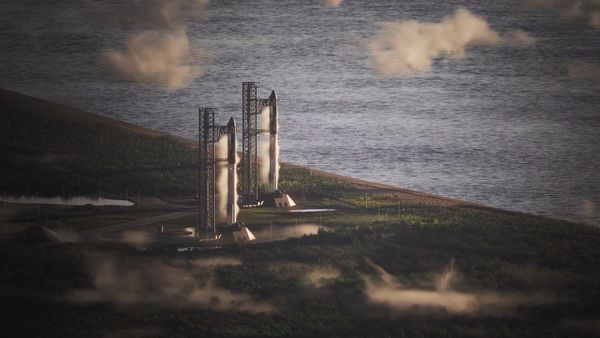A powerful earthquake that hit mountainous eastern Afghanistan has left at least 800 people confirmed dead and injured about 2,500, Taliban officials have said as rescuers struggled to reach the worst-hit villages.
The magnitude-6 earthquake struck several provinces close to the Pakistan border around midnight on Sunday, with the rugged region of Kunar the most severely affected. There were landslides and flooding.
The earthquake was shallow, taking place close to Earth’s surface, which is known to cause greater destruction. Several aftershocks were reported throughout the night and into Monday morning, which could even be felt in the capital, Kabul, more than 100 miles away.
The Taliban spokesperson Zabihullah Mujahid confirmed that the death toll had exceeded 800 by Monday afternoon and that rescue efforts were continuing to recover those trapped beneath mud and debris. However, those efforts were hampered as roads to affected areas were destroyed or blocked by rubble from the earthquake, and the terrain of the region is steep and treacherous.
The death toll is expected to rise significantly as local hospitals reported being inundated with casualties, and hundreds of people remain unaccounted for. Medics at the provincial hospital in Asadabad in Kunar described the situation as an overwhelming crisis, with new patients arriving every few minutes.
Rasheed Khan, a 40-year-old cloth merchant in Kabul originally from Kunar’s Watpur village, said his wife, children and brothers were among the dead. “It’s doomsday for me. I have lost my wife, three children and two brothers, and I don’t know what has happened to my other relatives and fellow villagers,” he said while returning to his native village from the capital.
“I fear thousands still remain trapped under the rubble, and I don’t know if they will be saved or not,” Khan said.
Afghanistan’s defence ministry said it had dispatched 30 doctors and truckloads of medicine to Kunar to assist local hospitals, according to the state-run Bakhtar news agency.
The Taliban urged humanitarian organisations to assist with rescue efforts in areas that could only be reached by air because of the landslides and flooding. Officials emphasised the urgent need for field hospitals, medical aid, rescue equipment, shelter, food and clean drinking water.
Since the Taliban retook control of Afghanistan in 2021 and installed a hardline regime – including heavy restrictions on women’s employment and education – there has been a significant withdrawal of foreign aid and assistance to the country. This has pushed the country’s healthcare system to the brink of collapse and severely undermined its capacity to respond to disasters.
Jeremy Smith, the country manager for Afghanistan for the Red Cross, which is taking part in the rescue operation, said the remote location of the earthquake made efforts particularly challenging. “There have been repeated aftershocks and more are feared in the coming days,” he said.
Kunar is a poor, mountainous region where homes are primarily constructed of mud and rocks. The epicentre of the earthquake was close to the bustling trade city of Jalalabad, near the border with Pakistan. Swaths of the city’s buildings are low-rise and informal constructions, mostly made of concrete and brick, which are particularly vulnerable to earthquakes.
Muhammad Aziz, a labourer from Kunar’s Nur Gul district, said 10 of his relatives, including his five children, were killed in the earthquake and many people from his village remained trapped under the rubble.
“The poor people in this area have lost everything,” he said. “There is death in every home, and beneath the rubble of each roof there are dead bodies. The mud houses have been wiped away and destruction is everywhere. People are desperately seeking help.”
There were reports that some remote villages were yet to receive any rescue assistance due to damaged access routes. Rescue workers in Nur Gul said a journey usually of two hours to reach one village, Masood, was now taking eight while many other villages could be accessed only on foot.
Nearly everyone in Masood has lost family members, and many people are believed trapped under the rubble. Rescue workers said the death toll could be as high as 250.
In Laghman province, officials reported at least 30 injuries, mostly among women. Tremors were also felt in Nuristan, but damage assessments there are still pending.
The disaster comes with Afghanistan, one of the poorest countries in the world, already in the midst of a severe economic crisis, exacerbated by the suspension of US foreign aid earlier this year, which has forced hospitals and health clinics to shut down.
The country is also grappling with the impact of the forced return of more than 2 million Afghan nationals from neighbouring Iran and Pakistan. According to the United Nations, more than half of Afghanistan’s 42 million population is already in need of humanitarian assistance.
China said it was ready to provide disaster relief assistance “according to Afghanistan’s needs and within its capacity” and India said it had delivered 1,000 family tents to Kabul and was moving 15 tonnes of food material to Kunar, with more to be sent from Tuesday.
The UN secretary general, António Guterres, said its mission in Afghanistan was preparing to help those in areas devastated by the quake. Pope Leo sent condolences for the dead.
Afghanistan is prone to deadly earthquakes, particularly in the Hindu Kush mountain range where the Indian and Eurasian tectonic plates meet. A series of earthquakes in its west killed more than 1,000 people last year.
A magnitude-6.3 earthquake struck Afghanistan on 7 October 2023, followed by strong aftershocks. The Taliban government estimated that at least 4,000 people died. The UN gave a far lower death toll of about 1,500. It was the deadliest natural disaster to strike Afghanistan in recent memory.







